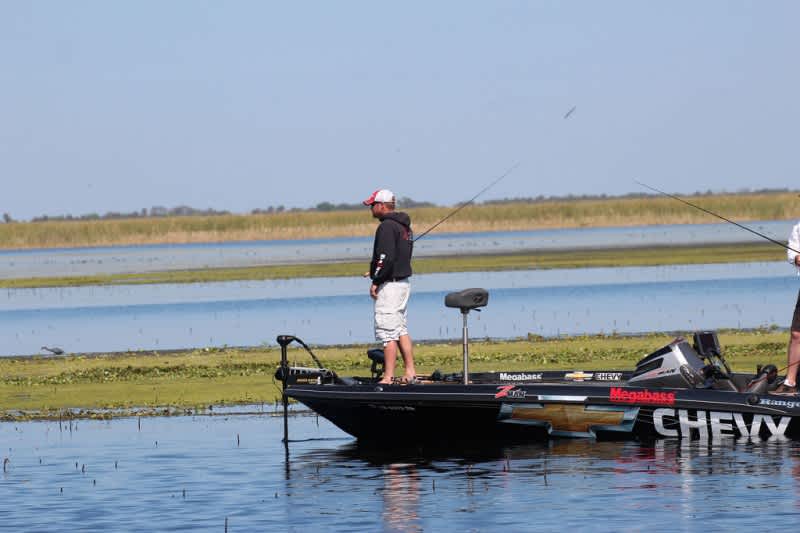Luke Clausen’s Tips for Culling Bass
Luke Clausen 06.13.13

Ounces can be the difference between winning a tournament and finishing out of the money, which makes culling accurately a critical part of tournament bass fishing. It can be a real pain to take live bass that are all about the same weight and figure out the right one to throw back, and hurt your fishing as well. Every minute spent culling can cost you two or three extra casts. Here are a few simple tips to help you cull quickly and accurately.
The first thing you need to do is acquire some culling tags. There are a number of different versions on the market: some clip on the lip of a fish, others use rubber to go through the gills and out the mouth, and the most popular versions puncture a small hole through a fish’s lower jaw. While they all work, make sure to use a version that will not fall off of a fish before you remove it yourself. You should also make sure that your culling tags have color-coded floating balls or buoys, which makes it easier to grab the correct tag and fish from the water. The most important thing, however, is to make sure each tag weighs the same amount.
Next you will need to acquire two more items before to cull accurately: a scale that is accurate within a few ounces, and a balance beam. There are dozens of scales on the market and costs range from a few dollars up to hundreds. Higher priced scales are generally more accurate and may also have the added feature of recording the weight of your fish and the color of the culling tag. With a lower cost scale you can replicate this by using a grease pencil and writing the weight of the fish and color of the tag on the windshield of your boat, or anything made of plastic or fiberglass. These marks can be wiped off after each day on the water.
When it’s time to cull you should be able to quickly narrow it down to a few fish by looking at the weights you have recorded. Even the most accurate scales can be a little off, however, and fish should be cross checked by using the balance beam. Use the weight acquired by the scale to select the fish that are close in weight and then use the balance beam to figure out exactly which is smallest. If you have to balance beam them all to find the smallest however, you should still take the time to do so: while you want to be fast, one miss-cull of a few ounces can make all the difference come weigh-in. Even if you are forced to balance beam all six fish however, it will still only take a few additional minutes.
Whenever you cull a fish out of your livewell, make sure to figure out which fish is the now the smallest. Determining this in advance will save you time with your next cull–which could very well be while your time is running out and you need to cull quickly to make it in on time
One last thing to consider, if you have both sides of the livewell for your use you should put the larger fish on one side and the smaller fish on the other. I hope this helps you cull accurately and quickly, which will give you the best chance to win by a few ounces instead of missing out on a win.

